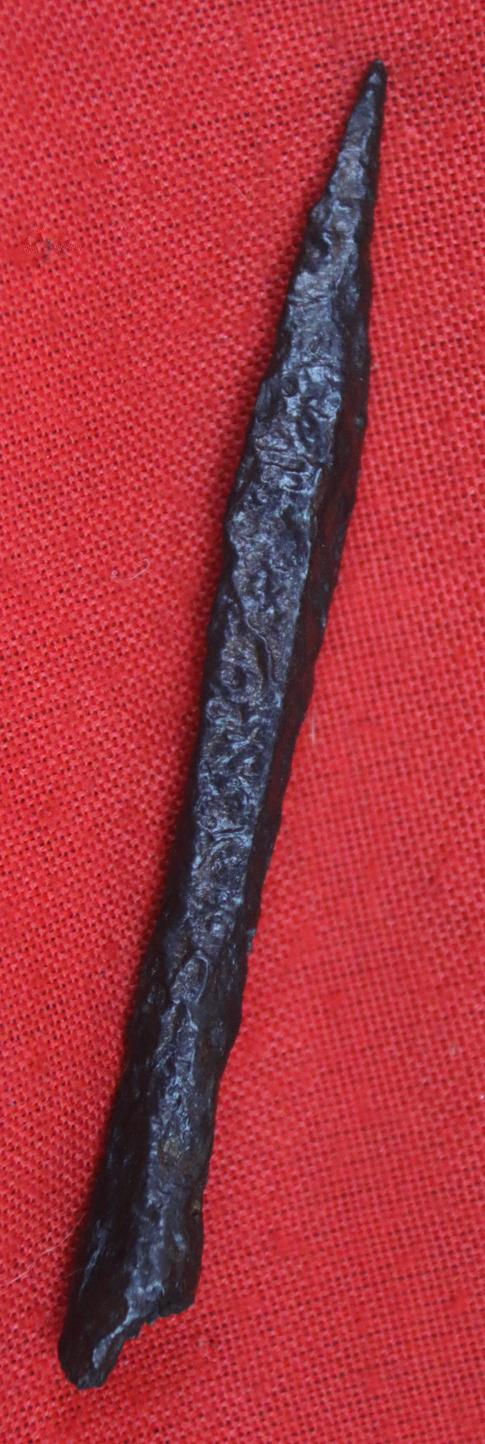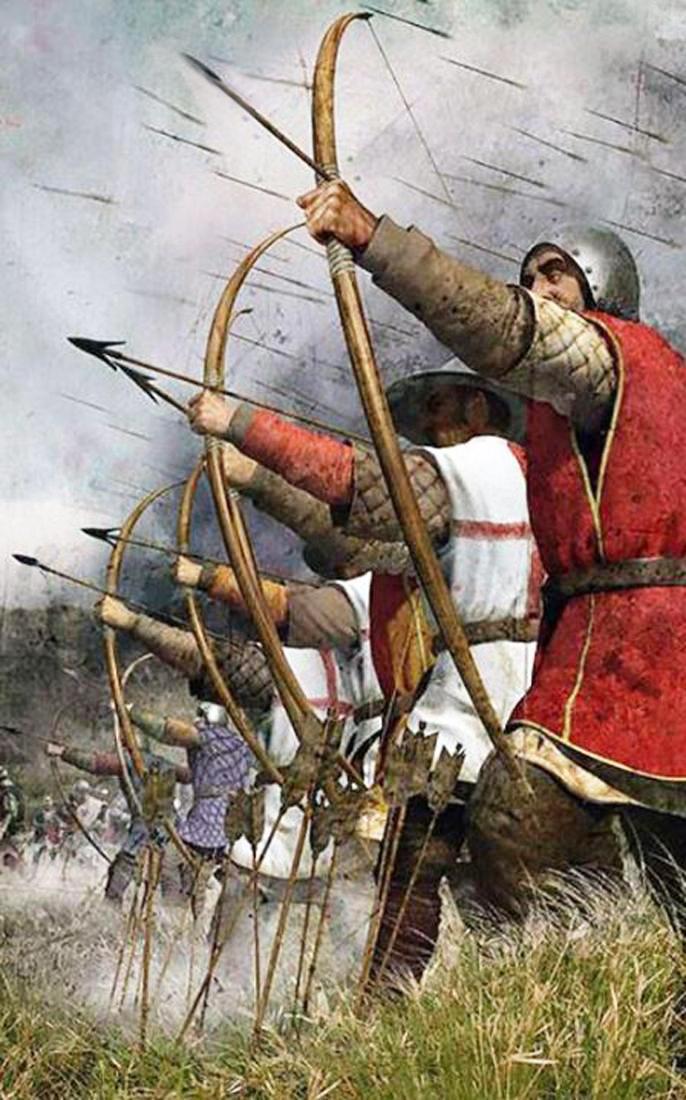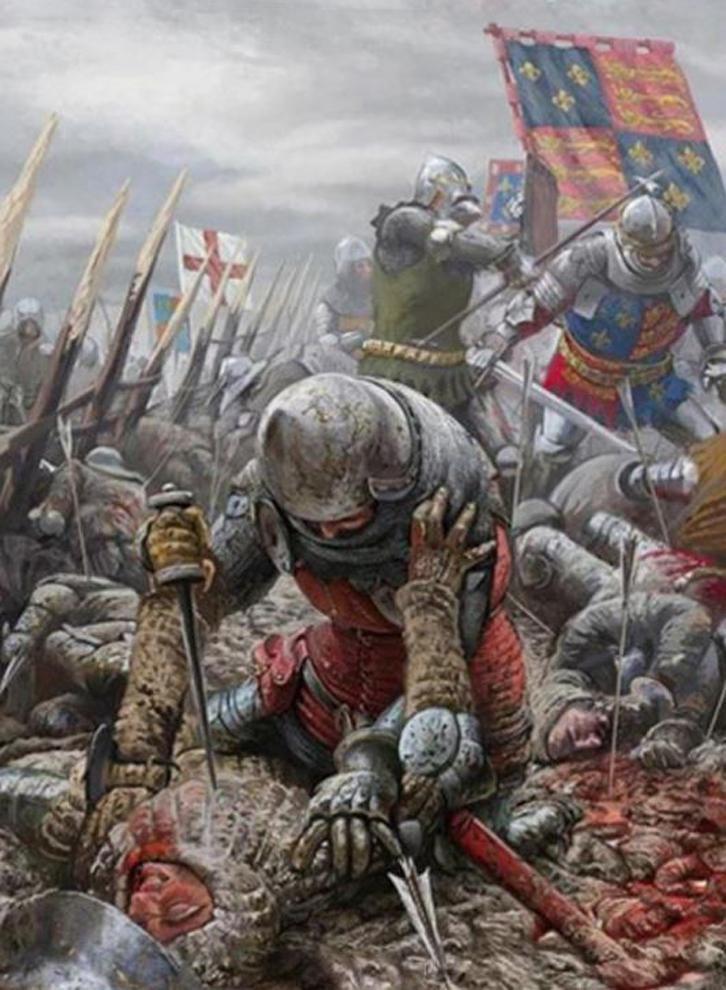A Superb Late 14th Century, Long, Socketed, Quatrefoil Bodkin, Armour Piercing Longbowman's Arrow Head, 'Grand Tour' Souvenir From Battle of Agincourt Site
Another part of our wondrous, new, historical, and original Ancient Roman, Ancient Greek, Viking, Crusaders, and Medeavil battlefield antiquities and artefacts, another collection that has just arrived with us, including Arrows and Crossbow bolts from Agincourt.
This armour piercing bodkin arrow is particularly heavy with powerful heft, and easily strong enough to piece a helm or iron plate armour.
Much of it acquired by a family in the 1820's while on a Grand Tour of Anglo French battle sites within Northern & Western France from Azincourt, in the Pas-de-Calais, to Poitiers in Aquitaine.
Most English war arrows for Longbows could vary, and some archers would have some type of armour piercing bodkin or “plate cutter” since their job was to penetrate armour (gambesons, hauberks, and plate). They had long and short bodkin, plate cutter, leaf, trefoil, crescent, and swallowtail broadheads. Broadheads were for targeting un-armoured men and knight's horses.
The Battle of Poitiers was a major English victory in the Hundred Years' War. It was fought on 19 September 1356 in Nouaillé, near the city of Poitiers in Aquitaine, western France. Edward, the Black Prince, led an army of English, Welsh, Breton and Gascon troops, many of them veterans of the Battle of Crécy. They were attacked by a larger French force led by King John II of France, which included allied Scottish forces. The French were heavily defeated; an English counter-attack captured King John, along with his youngest son, and much of the French nobility who were present.
The effect of the defeat on France was catastrophic, leaving Dauphin Charles to rule the country. Charles faced populist revolts across the kingdom in the wake of the battle, which had destroyed the prestige of the French nobility. The Edwardian phase of the war ended four years later in 1360, on favourable terms for England.
Poitiers was the second major English victory of the Hundred Years' War, coming a decade after the Battle of Crécy and about half a century before the Battle of Agincourt.The English army was led by Edward, the Black Prince, and composed primarily of English and Welsh troops, though there was a large contingent of Gascon and Breton soldiers with the army. Edward's army consisted of approximately 2,000 longbowmen, 3,000 men-at-arms, and a force of 1,000 Gascon infantry.
Like the earlier engagement at Crécy, the power of the English army lay in the longbow, a tall, thick self-bow made of yew. Longbows had demonstrated their effectiveness against massed infantry and cavalry in several battles, such as Falkirk in 1298, Halidon Hill in 1333, and Crécy in 1346. Poitiers was the second of three major English victories of the Hundred Years' War attributed to the longbow, though its effectiveness against armoured French knights and men-at-arms has been disputedGeoffrey the Baker wrote that the English archers under the Earl of Salisbury "made their arrows prevail over the French knights' armour",but the bowmen on the other flank, under Warwick, were initially ineffective against the mounted French men-at-arms who enjoyed the double protection of steel plate armour and large leather shields. Once Warwick's archers redeployed to a position where they could hit the unarmoured sides and backs of the horses, however, they quickly routed the cavalry force opposing them. The archers were also unquestionably effective against common infantry, who could not afford plate armour.
The English army was an experienced force; many archers were veterans of the earlier Battle of Crécy, and two of the key commanders, Sir John Chandos, and Captal de Buch were both experienced soldiers. The English army's divisions were led by Edward, the Black Prince, the Earl of Warwick, the Earl of Salisbury, Sir John Chandos and Jean III de Grailly, the Captal de Buch.
After several decades of relative peace, the English had renewed their war effort in 1415 amid the failure of negotiations with the French. In the ensuing campaign, many soldiers perished due to disease and the English numbers dwindled, but as they tried to withdraw to English-held Calais they found their path blocked by a considerably larger French army. Despite the disadvantage, the following battle ended in an overwhelming tactical victory for the English.
King Henry V of England led his troops into battle and participated in hand-to-hand fighting. The French king of the time, Charles VI, did not command the French army himself, as he suffered from severe psychotic illnesses with moderate mental incapacitation. Instead, the French were commanded by Constable Charles d'Albret and various prominent French noblemen of the Armagnac party.
This battle is notable for the use of the English longbow in very large numbers, with the English and Welsh archers forming up to 80 percent of Henry's army. The decimation of the French cavalry at their hands is regarded as an indicator of the decline of cavalry and the beginning of the dominance of ranged weapons on the battlefield.
Agincourt is one of England's most celebrated victories. The battle is the centrepiece of the play Henry V by Shakespeare. Juliet Barker in her book Agincourt: The King, the Campaign, the Battle ( published in 2005) argues the English and Welsh were outnumbered "at least four to one and possibly as much as six to one". She suggests figures of about 6,000 for the English and 36,000 for the French, based on the Gesta Henrici's figures of 5,000 archers and 900 men-at-arms for the English, and Jean de Wavrin's statement "that the French were six times more numerous than the English". The 2009 Encyclopædia Britannica uses the figures of about 6,000 for the English and 20,000 to 30,000 for the French. Part of an original medieval collection we have just acquired, of Viking and early British relics of warfare from ancient battle sites recovered up to 220 years ago.
It has been suggested that the bodkin came into its own as a means of penetrating armour, but research by the Royal Armouries has found no hardened bodkin points, though only two bodkin points were actually tested, not a statistically relevant number. Bodkins did, however, have greater ability to pierce mail armour than broadheads, and historical accounts do speak of bodkin arrows shot from close range piercing plate armour. Broadheads were made from steel, sometimes with hardened edges, but were more often used against lightly armoured men or horses than against an armoured adversary.
In a modern test, a direct hit from a steel bodkin point penetrated mail armour, although at point blank range. However, the test was conducted without a padded jack or gambeson, which was layered cloth armour worn under heavier armour for protection against projectiles, as it was known to stop even heavy arrows.
Armour of the medieval era was not completely proof against arrows until the specialised armour of the Italian city-state mercenary companies. Archery was thought not to be effective against plate armour in the Battle of Neville's Cross (1346), the Battle of Bergerac (1345), and the Battle of Poitiers (1356); such armour became available to European knights and men at arms of fairly modest means by the late 14th century, though never to all soldiers in any army.
Some recent tests have demonstrated that needle bodkins could penetrate all but heavy steel plate armour; one test used padded "jack" armour, coat of plates, iron and steel mail and steel plate. A needle bodkin penetrated every type, but may not have been able to inflict a lethal injury behind plate. As with all other tests, accuracy of these tests is called into question as the arrowheads were all high carbon steel and hardened, and the historical accuracy of the armour tested is unknown.The name comes from the Old English word bodkin or bodekin, a type of sharp, pointed dagger. Arrows of the long bodkin type were used by the Vikings and continued to be used throughout the Middle Ages. The bodkin point eventually fell out of use during the 16th and 17th centuries, as armour largely ceased to be worn and firearms took over from archery. long overall including socket
As with all our items it comes complete with our certificate of authenticity. read mor
Code: 24808





